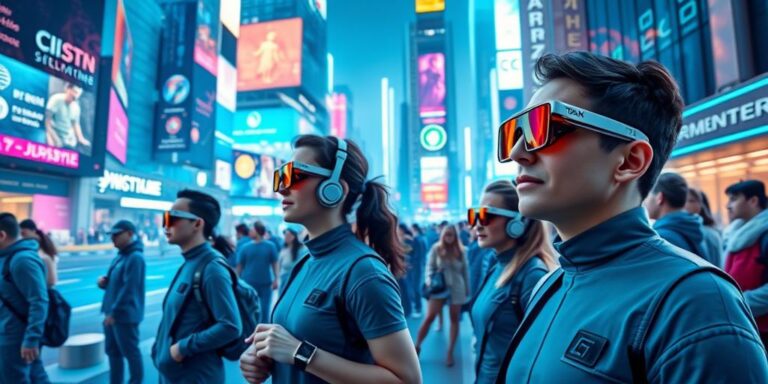Wearable Computing: Seamless Integration into Daily Life (2026)
Wearable computing has rapidly evolved from bulky gadgets to sleek, integrated components of our everyday lives. By 2026, these devices are expected to be even more seamlessly woven into the fabric of our daily routines, enhancing productivity, health, and connectivity.
The Evolution of Wearables
Early wearables like smartwatches and fitness trackers were novelties. Today, they’re indispensable tools for millions. As technology advances, we see:
- Miniaturization: Devices are becoming smaller and less intrusive.
- Enhanced Connectivity: Seamless integration with other smart devices and networks.
- Advanced Sensors: More accurate and diverse data collection.
- Improved Battery Life: Longer usage times between charges.
Key Applications in 2026
By 2026, wearable computing will impact numerous sectors:
Healthcare
Continuous health monitoring will be standard. Wearables will track vital signs, detect anomalies, and even administer medication. Imagine:
- Real-time Diagnostics: Immediate alerts for heart irregularities or signs of a stroke.
- Personalized Medicine: Data-driven treatment plans based on individual biometrics.
- Remote Patient Monitoring: Enhanced care for the elderly and those with chronic conditions.
Productivity and Business
In the workplace, wearables will enhance efficiency and safety. Consider:
- Augmented Reality (AR) Overlays: Hands-free access to critical information for technicians and engineers.
- Biometric Authentication: Secure and seamless access to systems and data.
- Communication Tools: Instant communication via subtle gestures or voice commands.
Lifestyle and Entertainment
Wearables will offer immersive experiences and personalized content. Envision:
- Smart Clothing: Apparel that adjusts to your body temperature or monitors sun exposure.
- AR Gaming: Interactive games that blend the digital and physical worlds.
- Personalized Recommendations: Content and experiences tailored to your real-time preferences.
Challenges and Considerations
Despite the potential, challenges remain:
- Data Privacy: Ensuring the secure and ethical use of personal data.
- Security Threats: Protecting devices from hacking and misuse.
- User Adoption: Overcoming resistance to new technologies and ensuring accessibility for all.
The Future is Integrated
Wearable computing in 2026 will be characterized by seamless integration, advanced functionality, and enhanced user experiences. As these devices become more sophisticated and ubiquitous, they will fundamentally transform how we live, work, and interact with the world. By addressing the challenges proactively, we can harness the full potential of wearable technology to create a smarter, healthier, and more connected future.




